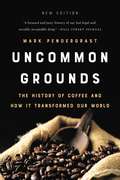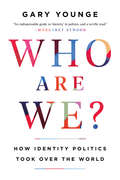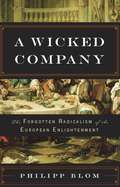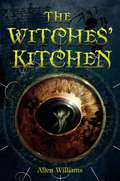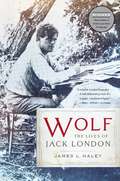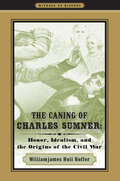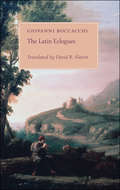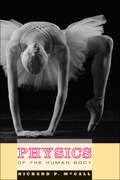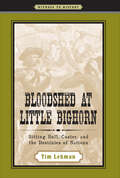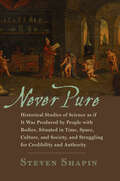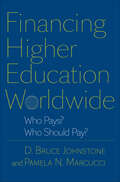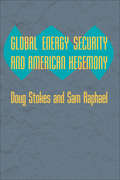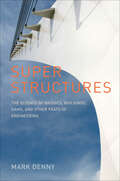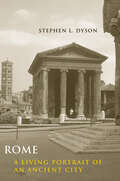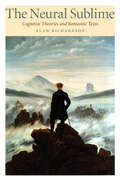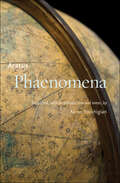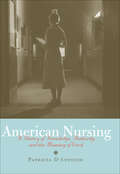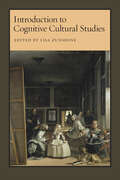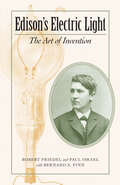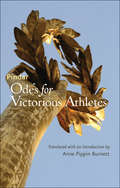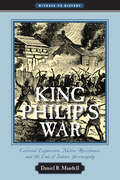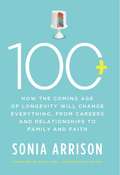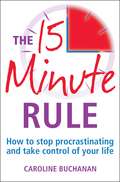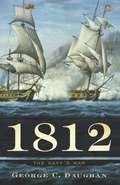- Table View
- List View
Uncommon Grounds: The History of Coffee and How It Transformed Our World
by Mark PendergrastThe definitive history of the world's most popular drugUncommon Grounds tells the story of coffee from its discovery on a hill in ancient Abyssinia to the advent of Starbucks. Mark Pendergrast reviews the dramatic changes in coffee culture over the past decade, from the disastrous "Coffee Crisis" that caused global prices to plummet to the rise of the Fair Trade movement and the "third-wave" of quality-obsessed coffee connoisseurs. As the scope of coffee culture continues to expand, Uncommon Grounds remains more than ever a brilliantly entertaining guide to the currents of one of the world's favorite beverages.
Who Are We -- And Should It Matter in the 21st Century?: How Identity Politics Took Over The World
by Gary YoungeFrom those who insist that Barack Obama is Muslim to the European legislators who go to extraordinary lengths to ban items of clothing worn by a tiny percentage of their populations, Gary Younge shows, in this fascinating, witty, and provocative examination of the enduring legacy and obsession with identity in politics and everyday life, that how we define ourselves informs every aspect of our social, political, and personal lives. Younge -- a black British male of Caribbean descent living in Brooklyn, New York, who speaks fluent Russian and French -- travels the planet in search of answers to why identity is so combustible. From Tiger Woods's legacy to the scandal over Danish cartoons of the Prophet Mohammed, he finds that identity is inescapable, but solidarity may not be as elusive as we fear. We are more alike than we are unalike. But the way we are unalike matters. To be male in Saudi Arabia, Jewish in Israel or white in Europe confers certain powers and privileges that those with other identities do not have. In other words, identity can represent a material fact in itself.As Gary Younge demonstrates in this classic book, now featuring a new introduction,, how we define ourselves affects every part of our lives: from violence on the streets to international terrorism; from changes in our laws to whom we elect; from our personal safety to military occupations. Moving between fascinating memoir and searing analysis, from beauty contests in Ireland to the personal views of Tiger Woods, from the author's own terrifying student days in Paris to how race and gender affect one's voting choices, Gary Younge makes surprising and enlightening connections and a devastating critique of the way our society really works.
A Wicked Company: The Forgotten Radicalism of the European Enlightenment
by Philipp BlomThe flourishing of radical philosophy in Baron Thierry Holbach's Paris salon from the 1750s to the 1770s stands as a seminal event in Western history. Holbach's house was an international epicenter of revolutionary ideas and intellectual daring, bringing together such original minds as Denis Diderot, Laurence Sterne, David Hume, Adam Smith, Ferdinando Galiani, Horace Walpole, Benjamin Franklin, Guillaume Raynal, and Jean-Jacques Rousseau.In A Wicked Company, acclaimed historian Philipp Blom retraces the fortunes of this exceptional group of friends. All brilliant minds, full of wit, courage, and insight, their thinking created a different and radical French Enlightenment based on atheism, passion, reason, and truly humanist thinking. A startlingly relevant work of narrative history, A Wicked Company forces us to confront with new eyes the foundational debates about modern society and its future.
The Witches' Kitchen
by Allen WilliamsDeep in the walls of a witches' cottage lays an ancient magical kitchen. Dangling over that kitchen's cauldron, pinched between the fingers of two witches, is a toad. And the Toad has no idea how she got there, and no memory of even her name. All she knows is she doesn't think she was always a Toad, or that she's ever been here before. Determined to recover her memories she sets out on a journey to the oracle, and along the way picks up a rag-tag team of friends: an iron-handed imp, a carnivorous fairy, and a few friendly locals.But the Kitchen won't make it easy. It is pitch black, infinite, and impossible to navigate, a living maze. Hiding in dark corners are beastly, starving things. Worse yet are the Witches themselves, who have sent a procession of horrific, deadly monsters on her trail. With some courage and wisdom, the Toad just might find herself yet-and with that knowledge, the power to defeat the mighty Witches. Filled with forty stunning pencil illustrations from the author, the Witches' Kitchen is a rich, well-imagined fantasy setting unlike any other.
Wolf: The Lives of Jack London
by James L. HaleyJack London was born a working-class, fatherless Californian in 1876. In his youth he was a boundlessly energetic adventurer on the bustling West Coast-by turns playing the role of hobo, sailor, prospector, and oyster pirate. He spent his brief life rapidly accumulating the experiences that would inform his acclaimed, best-selling books: The Call of the Wild, White Fang, and The Sea Wolf. London was plagued by contradictions. He chronicled nature at its most savage, but wept helplessly at the deaths of his favorite animals. At his peak the highest-paid writer in America, he was nevertheless constantly broke. An irrepressibly optimistic crusader for social justice, he burned himself out at forty: sick, angry, and disillusioned, but leaving behind a voluminous literary legacy, much of it ripe for rediscovery. In Wolf, award-winning author James L. Haley explores the forgotten Jack London-at once a hard-living globetrotter and a man alive with ideas, whose passion for social justice roared until the day he died. Returning London to his proper place in the American pantheon, Wolf resurrects a major American novelist in his full fire and glory.
The Caning of Charles Sumner: Honor, Idealism, and the Origins of the Civil War (Witness to History)
by Williamjames Hull HofferA signal, violent event in the history of the United States Congress, the caning of Charles Sumner on the Senate floor embodied the complex North-South cultural divide of the mid-nineteenth century. Williamjames Hull Hoffer's vivid account of the brutal act demonstrates just how far the sections had drifted apart and explains why the coming war was so difficult to avoid. Sumner, a noted abolitionist and gifted speaker, was seated at his Senate desk on May 22, 1856, when Democratic Congressman Preston S. Brooks approached, pulled out a gutta-percha walking stick, and struck him on the head. Brooks continued to beat the stunned Sumner, forcing him to the ground and repeatedly striking him even as the cane shattered. He then pursued the bloodied, staggering Republican senator up the Senate aisle until Sumner collapsed at the feet of Congressman Edwin B. Morgan. Colleagues of the two intervened only after Brooks appeared intent on beating the unconscious Sumner severely—and, perhaps, to death. Sumner's crime? Speaking passionately about the evils of slavery, which dishonored both the South and Brooks’s relative, Senator Andrew P. Butler. Celebrated in the South for the act, Brooks was fined only three hundred dollars, dying a year later of a throat infection. Sumner recovered and served out a distinguished Senate career until his death in 1873.Hoffer's narrative recounts the caning and its aftermath, explores the depths of the differences between free and slave states in 1856, and explains the workings of the Southern honor culture as opposed to Yankee idealism. Hoffer helps us understand why Brooks would take such great offense at a political speech and why he chose a cane—instead of dueling with pistols or swords—to meet his obligation under the South’s prevailing code of honor. He discusses why the courts meted out a comparatively light sentence. He addresses the importance of the event in the national crisis and shows why such actions are not quite as alien to today’s politics as they might at first seem.
The Latin Eclogues
by Giovanni BoccaccioGiovanni Boccaccio is famous for his masterpiece The Decameron, but his Latin Eclogues are relatively unknown. David R. Slavitt’s English translation makes these important pieces accessible to a new audience of readers. Elegant and engaging, these pastoral poems address the great issues of Boccaccio’s Italy, including the political and military intrigues of the day. Boccaccio modeled his poems on Petrarch’s eclogues and, before him, those of Virgil and Theocritus. Slavitt’s impeccable translations are highly readable, while his editorial interjections both elucidate the poet’s intended meaning and frame the poems for the reader. These charming works offer wonderful insight into daily life in Renaissance Italy. A prolific and award-winning translator, Slavitt turns the Eclogues into vibrant modern English, capturing not only the words of Boccaccio but the flavor of the original language.The availability of The Latin Eclogues in English is a major contribution to the study of the literature and history of the Italian Renaissance.
Physics of the Human Body
by Richard P. McCallRichard P. McCall's fascinating book explains how basic concepts of physics apply to the fundamental activities and responses of the human body, a veritable physics laboratory. Blood pumping through our veins is a vital example of Poiseuille flow; the act of running requires friction to propel the runner forward; and the quality of our eyesight demonstrates how properties of light enable us to correct near- and far-sightedness. Each chapter discusses a fundamental physics concept and relates it to the anatomy and physiology of applicable parts of the body. Topics include motion, fluids and pressure, temperature and heat, speech and hearing, electrical behaviors, optics, biological effects of radiation, and drug concentrations. Clear and compelling, with a limited amount of math, McCall's descriptions allow readers of all levels to appreciate the physics of the human physique. Physics of the Human Body will help curious high school students, undergraduates with medical aspirations, and practicing medical professionals understand more about the underlying physics principles of the human body.
Bloodshed at Little Bighorn: Sitting Bull, Custer, and the Destinies of Nations (Witness to History)
by Tim LehmanCommonly known as Custer's Last Stand, the Battle of Little Bighorn may be the best recognized violent conflict between the indigenous peoples of North America and the government of the United States. Incorporating the voices of Native Americans, soldiers, scouts, and women, Tim Lehman's concise, compelling narrative will forever change the way we think about this familiar event in American history.On June 25, 1876, General George Armstrong Custer led the United States Army's Seventh Cavalry in an attack on a massive encampment of Sioux and Cheyenne Indians on the bank of the Little Bighorn River. What was supposed to be a large-scale military operation to force U.S. sovereignty over the tribes instead turned into a quick, brutal rout of the attackers when Custer's troops fell upon the Indians ahead of the main infantry force. By the end of the fight, the Sioux and Cheyenne had killed Custer and 210 of his men. The victory fueled hopes of freedom and encouraged further resistance among the Native Americans. For the U.S. military, the lost battle prompted a series of vicious retaliatory strikes that ultimately forced the Sioux and Cheyenne into submission and the long nightmare of reservation life.This briskly paced, vivid account puts the battle's details and characters into a rich historical context. Grounded in the most recent research, attentive to Native American perspectives, and featuring a colorful cast of characters, Bloodshed at Little Bighorn elucidates the key lessons of the conflict and draws out the less visible ones. This may not be the last book you read on Little Bighorn, but it should be the first.
Never Pure: Historical Studies of Science as if It Was Produced by People with Bodies, Situated in Time, Space, Culture, and Society, and Struggling for Credibility and Authority
by Steven ShapinSteven Shapin argues that science, for all its immense authority and power, is and always has been a human endeavor, subject to human capacities and limits. Put simply, science has never been pure. To be human is to err, and we understand science better when we recognize it as the laborious achievement of fallible, imperfect, and historically situated human beings.Shapin’s essays collected here include reflections on the historical relationships between science and common sense, between science and modernity, and between science and the moral order. They explore the relevance of physical and social settings in the making of scientific knowledge, the methods appropriate to understanding science historically, dietetics as a compelling site for historical inquiry, the identity of those who have made scientific knowledge, and the means by which science has acquired credibility and authority.This wide-ranging and intensely interdisciplinary collection by one of the most distinguished historians and sociologists of science represents some of the leading edges of change in the scholarly understanding of science over the past several decades.
Financing Higher Education Worldwide: Who Pays? Who Should Pay?
by D. Bruce Johnstone Pamela N. MarcucciNo issue in higher education is as salient, or as controversial, as finance. As demand for higher education around the world grows, so do the costs associated with it, especially as governments shoulder less of the burden. Tuition fees rise and student loan debt grows. Who pays for these surging costs? Who should pay? D. Bruce Johnstone and Pamela N. Marcucci examine the universal phenomenon of cost-sharing in higher education—where financial responsibility shifts from governments and taxpayers to students and families. They find that growing costs for education far outpace public revenue streams that once supported it. Even with financial aid and scholarships defraying some of these costs, students are responsible for a greater share of the cost of higher education.Featuring comprehensive economic and policy data, the authors' international comparative approach shows how economically diverse countries all face similar cost-sharing challenges. So, who should pay for higher education? While cost-sharing is both politically and ideologically debated, Johnstone and Marcucci contend that, for almost all countries, it is imperative for the financial health of colleges and universities, bringing better efficiency, equity, and responsiveness. Financing Higher Education Worldwide combines sophisticated economic explanations with sensitive political and cultural analyses of the financial pressures facing higher education throughout the world.
Global Energy Security and American Hegemony (Themes in Global Social Change)
by Doug Stokes Sam RaphaelThis analysis of the United States and energy security examines the close relationship between US military supremacy in oil-rich regions and America's maintenance of global power.Energy security generally evokes thoughts of American intervention in the Middle East to protect US interests in that region's oil-rich fields. Doug Stokes and Sam Raphael move beyond that framework to consider US actions in Latin America, Central Asia, and Africa. Drawing on State and Defense Department records and other primary sources and previous scholarship, they show how US foreign policy since World War II has sought to maintain a global energy security regime that supports the nation's allies while maintaining American hegemony. Stokes and Raphael explain how US intervention in energy-rich states insulates and stabilizes those nations' transnationally oriented actors and political economies and why American oil diversification strategy strengthens the country's position against rivals in the global capitalist system. They argue that counterinsurgency aid and other types of coercive US statecraft protect the recipient states from an array of potentially revolutionary armed and unarmed internal social forces, thereby securing the energy supplies of nations deemed strategically important to the United States or its allies. Clear and accessible, this cutting-edge contemporary policy analysis will engage scholars of US foreign policy and international relations as well as policymakers grappling with the importance of energy security in today's world.
Super Structures: The Science of Bridges, Buildings, Dams, and Other Feats of Engineering
by Mark DennyEver wonder how a graceful and slender bridge can support enormous loads over truly astonishing spans? Why domes and free-standing arches survive earthquakes that flatten the rest of a city?Physicist Mark Denny looks at the large structures around us—tall buildings, long bridges, and big dams—and explains how they were designed and built and why they sometimes collapse, topple, or burst. Denny uses clear, accessible language to explain the physics behind such iconic structures as the Parthenon, the Eiffel Tower, the Forth Rail Bridge in Edinburgh, and Hoover Dam. His friendly approach allows readers to appreciate the core principles that keep these engineering marvels upright without having to master complex mathematical equations. Employing history, humor, and simple physics to consider such topics as when to use screws or nails, what trusses are, why iron beams are often I-shaped, and why medieval cathedrals have buttresses, Denny succeeds once again in making physics fun.
Rome: A Living Portrait of an Ancient City (Ancient Society and History)
by Stephen L. DysonStephen L. Dyson has spent a lifetime studying and teaching the history of ancient Rome. That unparalleled knowledge is reflected in his magisterial overview of the Eternal City.Rather than look only at the physical development of the city—its buildings, monuments, and urban spaces—Dyson also explores its social, economic, and cultural histories. This unique approach situates Rome against a background of comparative urban history and theory, allowing Dyson to examine the dynamic society that once thrived there. In his personal effort to reconstruct the city, Dyson populates its streets with the hurried politicians, hawking vendors, and animated students that once lived, worked, and studied there, bringing the ancient city to life for a new generation of students and tourists. Dyson follows Rome as it developed between the third century BC and the fourth century AD, dividing the great megalopolis into distinct neighborhoods and locales. He shows how these communities, each with its own unique customs and colorful inhabitants, eventually grew into the great imperial capital of the Italian Empire. Dyson integrates the full range of sources available—literary, artistic, epigraphic, and archaeological—to create a comprehensive history of the monumental city. In doing so, he offers a dramatic picture of a complex and changing urban center that, despite its flaws, flourished for centuries.
The Neural Sublime: Cognitive Theories and Romantic Texts
by Alan RichardsonThe Neural Sublime brings recent work in cognitive neuroscience to bear on some famously vexed issues in British Romantic studies. In exciting and unprecedented ways, Alan Richardson demonstrates how developments in the neurosciences can transform the study of literary history. Richardson presents six exemplary studies, each exploring a different intersection of Romanticism and the sciences of the mind and brain: the experience of the sublime and the neuroscience of illusion; the Romantic imagination and visual imaging; the figure of apostrophe and linguistic theory; fictional representations of the mind and "theory of mind" theory; depictions of sibling incest and neo-Darwinian theories of mental behavior; and representations of female speech and cognitive developmental psychology. Richardson’s insightful analysis opens fresh perspectives on British Romanticism, pointing scholars to new developments in cognitive literary studies. He combines elements of new historicist analysis with original—and much-needed—models for understanding language, subjectivity, and social behavior. Far from signaling a departure from the prevalent critical approaches of new historicism, Richardson argues, cognitive theory presents an essential complement to them.The Neural Sublime features an array of cognitive and neuroscientific approaches, providing an engaging and readable introduction to the emergent field of cognitive literary studies.
Phaenomena (Johns Hopkins New Translations from Antiquity)
by AratusAfter the Iliad and the Odyssey, the Phaenomena was the most widely read poem in the ancient world. Its fame was immediate. It was translated into Latin by Ovid and Cicero and quoted by St. Paul in the New Testament, and it was one of the few Greek poems translated into Arabic. Aratus’ Phaenomena is a didactic poem—a practical manual in verse that teaches the reader to identify constellations and predict weather. The poem also explains the relationship between celestial phenomena and such human affairs as agriculture and navigation. Despite the historical and pedagogical importance of the poem, no English edition suitable for students and general readers has been available for decades. Aaron Poochigian’s lively translation makes accessible one of the most influential poets of antiquity. Poochigian's interpretation of the Phaenomena reestablishes the ancient link between poetry and science and demonstrates that verse is an effective medium for instruction. Featuring references to Classical mythology and science, star charts of the northern and southern skies, extensive notes, and an introduction to the work’s stylistic features and literary reception, this dynamic work will appeal to students of Ancient Greece who want to deepen their understanding of the Classical world.
American Nursing: A History of Knowledge, Authority, and the Meaning of Work
by Patricia D'AntonioThis new interpretation of the history of nursing in the United States captures the many ways women reframed the most traditional of all gender expectations—that of caring for the sick—to create new possibilities for themselves, to renegotiate the terms of some of their life experiences, and to reshape their own sense of worth and power. For much of modern U.S. history, nursing was informal, often uncompensated, and almost wholly the province of female family and community members. This began to change at the end of the nineteenth century when the prospect of formal training opened for women doors that had been previously closed. Nurses became respected professionals, and becoming a formally trained nurse granted women a range of new social choices and opportunities that eventually translated into economic mobility and stability. Patricia D'Antonio looks closely at this history—using a new analytic framework and a rich trove of archival sources—and finds complex, multiple meanings in the individual choices of women who elected a nursing career. New relationships and social and professional options empowered nurses in constructing consequential lives, supporting their families, and participating both in their communities and in the health care system. Narrating the experiences of nurses, D'Antonio captures the possibilities, power, and problems inherent in the different ways women defined their work and lived their lives. Scholars in the history of medicine, nursing, and public policy, those interested in the intersections of identity, work, gender, education, and race, and nurses will find this a provocative book.
Introduction to Cognitive Cultural Studies
by Lisa ZunshineDrawing on the explosion of academic and public interest in cognitive science in the past two decades, this volume features articles that combine literary and cultural analysis with insights from neuroscience, cognitive evolutionary psychology and anthropology, and cognitive linguistics. Lisa Zunshine’s introduction provides a broad overview of the field. The essays that follow are organized into four parts that explore developments in literary universals, cognitive historicism, cognitive narratology, and cognitive approaches in dialogue with other theoretical approaches, such as postcolonial studies, ecocriticism, aesthetics, and poststructuralism. Introduction to Cognitive Cultural Studies provides readers with grounding in several major areas of cognitive science, applies insights from cognitive science to cultural representations, and recognizes the cognitive approach’s commitment to seeking common ground with existing literary-theoretical paradigms. This book is ideal for graduate courses and seminars devoted to cognitive approaches to cultural studies and literary criticism.Contributors: Mary Thomas Crane, Nancy Easterlin, David Herman, Patrick Colm Hogan, Bruce McConachie, Alan Palmer, Alan Richardson, Ellen Spolsky, G. Gabrielle Starr, Blakey Vermeule, Lisa Zunshine
Edison's Electric Light: The Art of Invention (Johns Hopkins Introductory Studies in the History of Technology)
by Robert Friedel Paul B. IsraelIn September 1878, Thomas Alva Edison brashly—and prematurely—proclaimed his breakthrough invention of a workable electric light. That announcement was followed by many months of intense experimentation that led to the successful completion of his Pearl Street station four years later. Edison was not alone—nor was he first—in developing an incandescent light bulb, but his was the most successful of all competing inventions. Drawing from the documents in the Edison archives, Robert Friedel and Paul Israel explain how this came to be. They explore the process of invention through the Menlo Park notes, discussing the full range of experiments, including the testing of a host of materials, the development of such crucial tools as the world's best vacuum pump, and the construction of the first large-scale electrical generators and power distribution systems. The result is a fascinating story of excitement, risk, and competition.Revised and updated from the original 1986 edition, this definitive study of the most famous invention of America's most famous inventor is completely keyed to the printed and electronic versions of the Edison Papers, inviting the reader to explore further the remarkable original sources.
Odes for Victorious Athletes (Johns Hopkins New Translations from Antiquity)
by PindarYou've just won the gold medal, what are you going to do? In Ancient Greece, your patron could throw a feast in your honor and have a poet write a hymn of praise to you. The great poet Pindar composed many such odes for victorious athletes. Esteemed classicist Anne Pippin Burnett presents a fresh and exuberant translation of Pindar's victory songs.The typical Pindaric ode reflects three separate moments: the instant of success in contest, the victory night with its disorderly revels, and the actual banquet of family and friends where the commissioned poem is being offered as entertainment. In their essential effect, these songs transform a physical triumph, as experienced by one man, into a sense of elation shared by his peers—men who have gathered to dine and to drink.Athletic odes were presented by small bands of dancing singers, influencing the audience with music and dance as well as by words. These translations respect the form of the originals, keeping the stanzas that shaped repeating melodies and danced figures and using rhythms meant to suggest performers in motion.Pindar's songs were meant to entertain and exalt groups of drinking men. These translations revive the confident excitement of their original performances.
King Philip's War: Colonial Expansion, Native Resistance, and the End of Indian Sovereignty (Witness to History)
by Daniel R. MandellKing Philip's War was the most devastating conflict between Europeans and Native Americans in the 1600s. In this incisive account, award-winning author Daniel R. Mandell puts the war into its rich historical context.The war erupted in July 1675, after years of growing tension between Plymouth and the Wampanoag sachem Metacom, also known as Philip. Metacom’s warriors attacked nearby Swansea, and within months the bloody conflict spread west and erupted in Maine. Native forces ambushed militia detachments and burned towns, driving the colonists back toward Boston. But by late spring 1676, the tide had turned: the colonists fought more effectively and enlisted Native allies while from the west the feared Mohawks attacked Metacom’s forces. Thousands of Natives starved, fled the region, surrendered (often to be executed or sold into slavery), or, like Metacom, were hunted down and killed.Mandell explores how decades of colonial expansion and encroachments on Indian sovereignty caused the war and how Metacom sought to enlist the aid of other tribes against the colonists even as Plymouth pressured the Wampanoags to join them. He narrates the colonists’ many defeats and growing desperation; the severe shortages the Indians faced during the brutal winter; the collapse of Native unity; and the final hunt for Metacom. In the process, Mandell reveals the complex and shifting relationships among the Native tribes and colonists and explains why the war effectively ended sovereignty for Indians in New England. This fast-paced history incorporates the most recent scholarship on the region and features nine new maps and a bibliographic essay about Native-Anglo relations.
100 Plus: How the Coming Age of Longevity Will Change Everything, From Careers and Relationships to Family and
by Sonia ArrisonHumanity is on the cusp of an exciting longevity revolution. The first person to live to 150 years has probably already been born. What will your life look like when you live to be over 100? Will you be healthy? Will your marriage need a sunset clause? How long will you have to work? Will you finish one career at sixty-five only to go back to school to learn a new one? And then, will you be happily working for another sixty years? Maybe you&’ll be a parent to a newborn and a grandparent at the same time. Will the world become overpopulated? And how will living longer affect your finances, your family life, and your views on religion and the afterlife? In 100 Plus, futurist Sonia Arrison takes us on an eye-opening journey to the future at our doorsteps, where science and technology are beginning to radically change life as we know it. She introduces us to the people transforming our lives: the brilliant scientists and genius inventors and the billionaires who fund their work. The astonishing advances to extend our lives—and good health—are almost here. In the very near future fresh organs for transplants will be grown in laboratories, cloned stem cells will bring previously unstoppable diseases to their knees, and living past 100 will be the rule, not the exception. Sonia Arrison brings over a decade of experience researching and writing about cutting-edge advances in science and technology to 100 Plus, painting a vivid picture of a future that only recently seemed like science fiction, but now is very real. 100 Plus is the first book to give readers a comprehensive understanding of how life-extending discoveries will change our social and economic worlds. This illuminating and indispensable text will help us navigate the thrilling journey of life beyond 100 years.
The 15 Minute Rule: How to stop procrastinating and take charge of your life
by Caroline BuchananThe Fifteen Minute Rule sets out to help us tackle those things that we are always putting off: starting an exercise regime, looking for a new job, doing our tax returns or learning a new skill. Or perhaps doing something to improve the quality of life, by learning to fight depression or confront an annoying habit. Perhaps it's simply clearing the huge pile of clutter from your desk. Whatever it is, all you need is fifteen minutes and before you know it, some weeks later, you have accomplished a task you couldn't bring yourself to start.The hardest thing to overcome when you're trying to start something daunting and new is to actually start. That mountain of paperwork in front of you that looks like it will take hours to go through and hours of mind-numbing sorting is hard to contemplate for most - but fifteen minutes isn't. Fifteen minutes is manageable and can bring minor and major results, each one providing satisfaction and a boost in self-esteem. This book is for those people who need instant gratification and also those long-term players who recognise the benefits of consistency and dedication.
1812: The Navy's War
by George C. DaughanAt the outbreak of the War of 1812, America's prospects looked dismal. It was clear that the primary battlefield would be the open ocean-but America's war fleet, only twenty ships strong, faced a practiced British navy of more than a thousand men-of-war. Still, through a combination of nautical deftness and sheer bravado, the American navy managed to take the fight to the British and turn the tide of the war: on the Great Lakes, in the Atlantic, and even in the eastern Pacific. In 1812: The Navy's War, prizewinning historian George C. Daughan tells the thrilling story of how a handful of heroic captains and their stalwart crews overcame spectacular odds to lead the country to victory against the world's greatest imperial power. A stunning contribution to military and national history, 1812: The Navy's War is the first complete account in more than a century of how the U.S. Navy rescued the fledgling nation and secured America's future.
1812: The Navy's War
by George C DaughanAt the outbreak of the War of 1812, America's prospects looked dismal. It was clear that the primary battlefield would be the open ocean -- but America's war fleet, only twenty ships strong, faced a practiced British navy of more than a thousand men-of-war. Still, through a combination of nautical deftness and sheer bravado, the American navy managed to take the fight to the British and turn the tide of the war: on the Great Lakes, in the Atlantic, and even in the eastern Pacific. In 1812: The Navy's War, prizewinning historian George C. Daughan tells the thrilling story of how a handful of heroic captains and their stalwart crews overcame spectacular odds to lead the country to victory against the world's greatest imperial power. A stunning contribution to military and national history, 1812: The Navy's War is the first complete account in more than a century of how the U.S. Navy rescued the fledgling nation and secured America's future.
